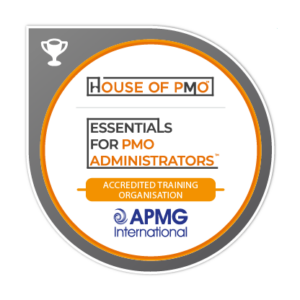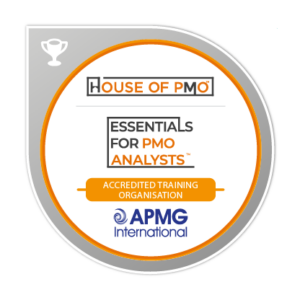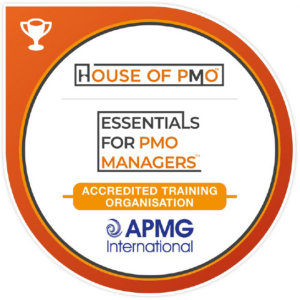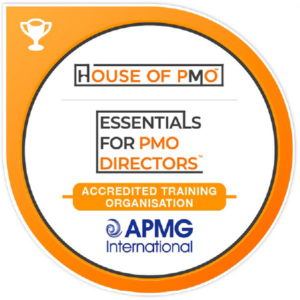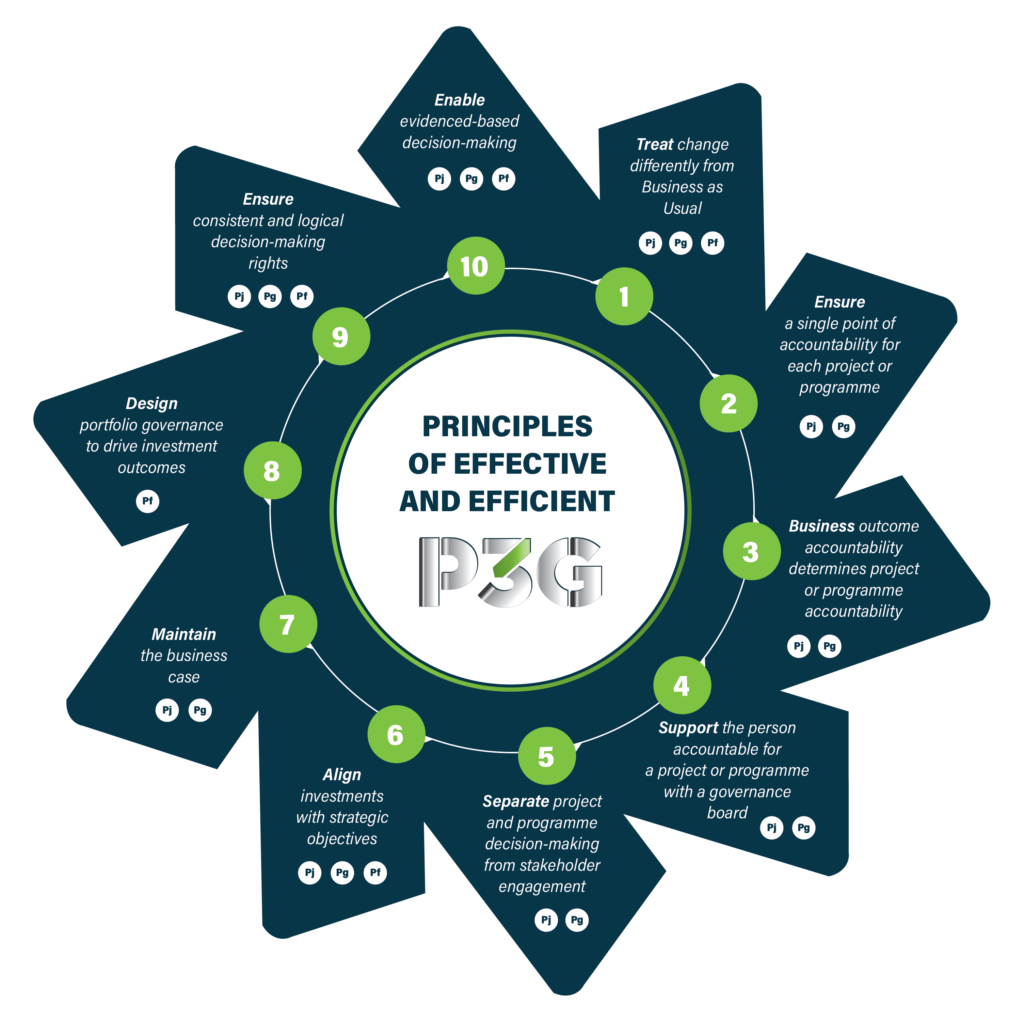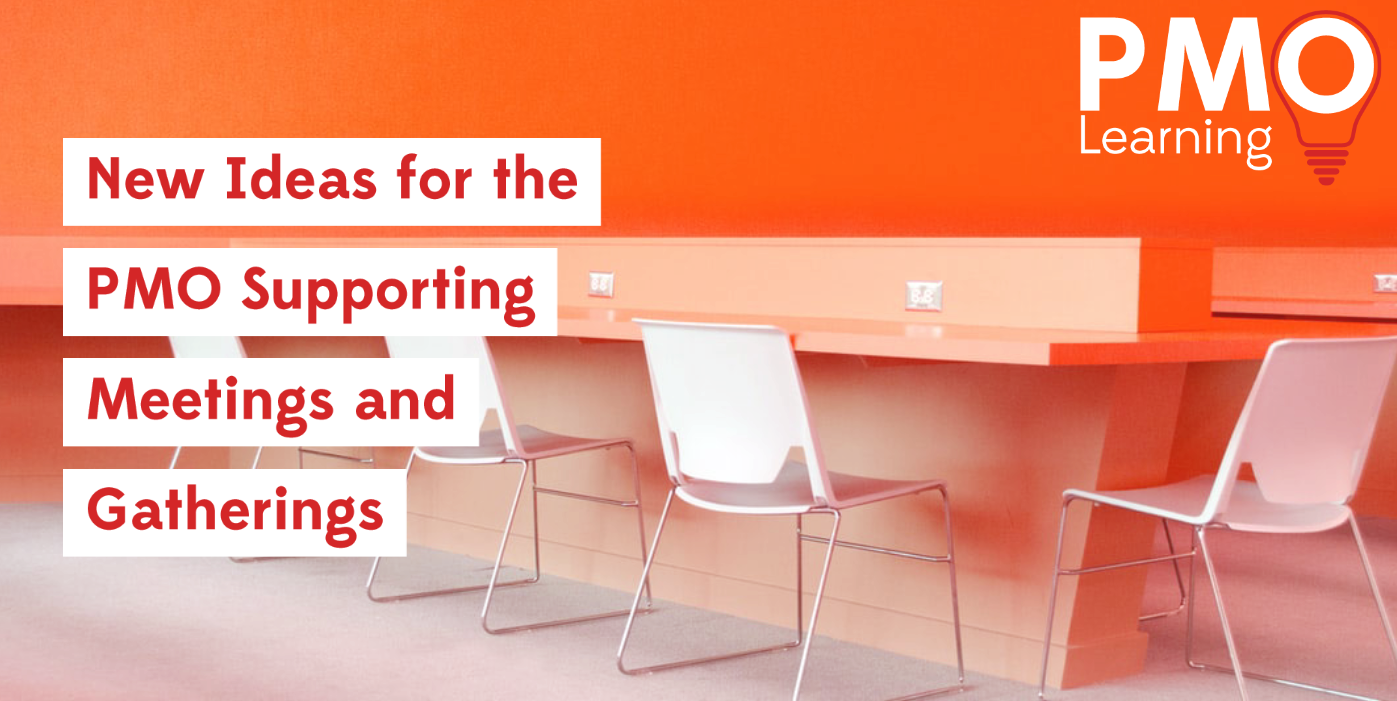
There is a popular phrase that sums up project management, the four Ps – product, process, projects and of course people. It’s the four combined that makes effective project management.
The people element is arguably the hardest to get right – managing teams; resolving conflict; demonstrating leadership; managing performance; dealing with ‘resources’. The list goes on, the everyday interactions between each other all building to, hopefully, a successful outcome for the project.
One of the most fascinating areas for me has always been those interactions where people ‘gather’ in projects and within the PMO. The most obvious and traditional being the project meetings – status, review, customer, again the list goes on, a meeting to hopefully decide the action to be taken or decisions made.
 In the project environment today, project meetings are not the only gathering we can expect. Daily stand-ups; lunch-and-learns; brainstorming huddles; communities of practice; forums and not to mention formal ways of learning together through training courses and workshops.
In the project environment today, project meetings are not the only gathering we can expect. Daily stand-ups; lunch-and-learns; brainstorming huddles; communities of practice; forums and not to mention formal ways of learning together through training courses and workshops.
Gatherings are hosted to aid innovation; create visions and roadmaps; to resolve a problem or to provide information, knowledge share or even wisdom.
Each and every one of us who works in a project environment will have our stories to tell about the worse gatherings they’ve been subjected to (or even run!) yet projects can’t succeed without the collective heads of people striving to make it so.
I love this book – The Art of Gathering. Nothing whatsoever to do with project management but the strapline, “Create Transformative Meetings, Events and Experiences” certainly held intrigue. I figured that there are probably lots of project and PMO practitioners out there who could certainly do with the help in that department.
The book, by Priya Parker, is wonderfully written and in this post, I want to share some of the insights I took from it that relate very well to the types of gatherings we frequently find ourselves in within projects and project management.
The key skill for any kind of gathering is facilitation and to be experienced in it you can expect to excel at ‘shaping group dynamics and collective conversations’. But what does that mean? Here are some real practical tips on how to do that.
1. What’s the Meeting About?
When we’re meeting and why is the obvious place to start but even that is not as straightforward as we think. We often launch straight into setting up a meeting without stopping to really think about when and why. Priya highlights the difference between category and purpose of meetings and how they make a big difference when starting to plan any kind of gathering.
The category might be a project status meeting but the purpose of it is why we’re really gathering people together. When we ask the question ‘why are we gathering?’, to say we’re getting together to see where the project is at, is almost the purpose but not quite it.
A purpose would be, for example, to resolve a specific issue on the project that has cropped up. The purpose could be to gain agreement on the work for the next two weeks or to work out which sub-contractor we need for a specific piece of work.
The interesting thing about categories and purposes is – when you just go with a category of a gathering i.e., it’s a project status meeting, that’s when people come along thinking they know what the format will be, who will be there, what the context is and therefore come with the same approach and mindset they’ve always had.
It also means that as a Project Manager setting a project status meeting without thinking about the real purpose means we’re more likely to go along with the usual ‘activities and structure’ of the project status meeting when we might need a different approach because of the true purpose. We get tied into the templated approach to running the project status meeting the way we’ve always done it.
In short, the purpose drives how we might want people to gather, to get the real results we’re looking for out of that meeting.
2. Changing Structures to Meet Purposes
 We tend to have the same old rituals when we run the same kind of meetings over and over again. If we’re looking for a different kind of outcome that means we have to think differently about the formats we use. We have to really think about the needs and purposes of our meetings – the way we want to plan and run them, rather than just doing what might be accepted as the norm within our organisations.
We tend to have the same old rituals when we run the same kind of meetings over and over again. If we’re looking for a different kind of outcome that means we have to think differently about the formats we use. We have to really think about the needs and purposes of our meetings – the way we want to plan and run them, rather than just doing what might be accepted as the norm within our organisations.
Here are some specific areas to think about:
- “The more focused and particular a gathering is, the more narrowly it frames itself and the more passion it arouses” – you’ve also got the right people in the room.
- “A good gathering is disputable” – you need to commit to something so you know the purpose will guide you throughout the gathering to that goal.
- “Ask what problem it will solve” – to help get to the real purpose of the gathering. A gathering can be organised around a ‘desired outcome’
- Resist the urge to multi-task, to have your gathering trying to achieve too many things – stay focused.
- Use your purpose to choose what goes into the meeting and what stays out – general updates in a status meeting can be collected easily beforehand, keep the meeting for specific actions and decisions on a focused topic.
- It’s easier to invite people than it is to exclude people – “overinclusion is a sign of a deeper problem” and we have to keep out those people who really have no reason to be there based on the purpose of the meeting.
- “By closing the door, you create the room” which means by keeping people out that don’t need to be there, you’ll get a better outcome by the people who have been specifically invited for their contribution to the purpose.
3. Size of Gatherings
When we know when we’re meeting and why – the purpose also guides us to the right number of people needed to achieve what we’re looking for. Priya sets it out a “6, 12 to 15, 30 and 150:
- 6 people give intimacy and a high level of sharing – storytelling can take place but it’s not so good for diversity of views and it can’t carry non-contributors.
- 12 to 15 fits comfortably around a table, 12 still allows a degree of intimacy whilst 15 gives more diversity.
- 30 is a party and starts to bring a different kind of energy but too big for single conversations.
- 150 and you’re into conference-type gatherings where you could still meet every single person there.
The numbers are worth remembering for project meetings; steering committees; lunch and learns and training courses and of course larger learning events for entire departments. Which leads nicely to the venue you choose and how venues in themselves come with a certain ‘script’. Which means you tend to use the room or space in a way that is intended, yet without really understanding why we do that. A boardroom setting signals serious and senior yet if our purpose is about generating new ideas through brainstorming, the venue is all wrong.
There are many tips in the book and the one I liked was about displacement.
Displacement is all about getting people out of old habits if we want them to attend and think differently about the meeting we need to do things differently. In terms of the venue, “think about where your next meeting ought not to take place and hold it there” or change the way the venue you normally use is set up. Could you remove all the tables? Remove all the chairs? Create different spaces using impromptu fixtures such has flip chart stands?

4. The Power in the Gathering
It isn’t enough just to set a purpose, direction and ground rules. All these things require enforcement. And if you don’t enforce them, others will step in and enforce their own purposes, directions and ground rules.
Being the leader or ‘ruler’ of the meeting requires generous authority.
 That is a meeting run by someone with a ‘strong, confident hand but it is run selflessly for the sake of others’. That means in the pursuit of the outcomes of the gathering you will protect your attendees (from anything that threatens to ruin the meeting); to ensure attendees are equalised, there is no hierarchy in the room (an interesting concept for a steering committee perhaps?); to connect your attendees to each other.
That is a meeting run by someone with a ‘strong, confident hand but it is run selflessly for the sake of others’. That means in the pursuit of the outcomes of the gathering you will protect your attendees (from anything that threatens to ruin the meeting); to ensure attendees are equalised, there is no hierarchy in the room (an interesting concept for a steering committee perhaps?); to connect your attendees to each other.
The Art of Gathering goes into the etiquette of meetings; the creation of rules; priming people beforehand; not starting or ending with logistics; ushering people in; how to open; bringing your best self to a gathering and how to close. Each one of these steps brings a different perspective, presents an opportunity to really make a difference with the precious time people commit to an all manner of project management gatherings.
There is no need to be mediocre when it doesn’t take much to provide a different environment; a different approach; bringing different energy that can be infectious and ultimately productive. It is all about the marginal gains – trying one little different thing in your next gathering to see how your team respond. It can be as simple as cutting down the attendee list; creating the rules and priming beforehand; trying different venues or understanding how generous authority can be incorporated into your leadership style.
As the article draws to a close, we’re reminded that closing is just as important as all the other elements of a good gathering. And I am to remind you of how this article was initiated – just like how the meeting is closed with a circle back to the beginning and the purpose.
The people part of project management is arguably the most important lever to successful project outcomes. It’s the way we choose to manage and lead; the way we communicate and interact; the ideas we generate and the decisions that get made that really make projects tick.
If we can make the most of our time together, that precious time we all want to use more productively on projects, hopefully at the same time we can leave our meetings feeling energised, engaged, even fulfilled and happier for being part of the experience.
The Art of Gathering: Create Transformative Meetings, Events and Experiences
Facilitation and the PMO
If you’re interested in developing your own facilitation skills, check out the Facilitation Fundamentals for the PMO course – a half-day course developed specifically for PMO practitioners.
Enjoying Our Blog?
Sign up and receive all our articles (we’ll send you an update once a week!) plus special offers and events:







